The Vortex Razor HD 13-39×56 is a backcountry hunter’s dream because it weighs in at just 29 oz! On top of that, it provides clearer glass and a better picture than many full-size spotting scopes.
I picked up the small version of the Vortex Razor because I was tired of toting a full-size spotter with mediocre performance around the mountains (the Leupold SX2 Alpine that I previously owned). The Razor was an immediate upgrade in performance and packability.
Over the last couple of months, I’ve been using the Razor HD 13-39×56 to glass for everything from ducks to bucks. After putting it through some real-world tests and experience I have some takeaways for the situations where this spotting scope may excel and situations where you might be better off without it.
Check out the video at the end of this article for more information about the Mini Razor.
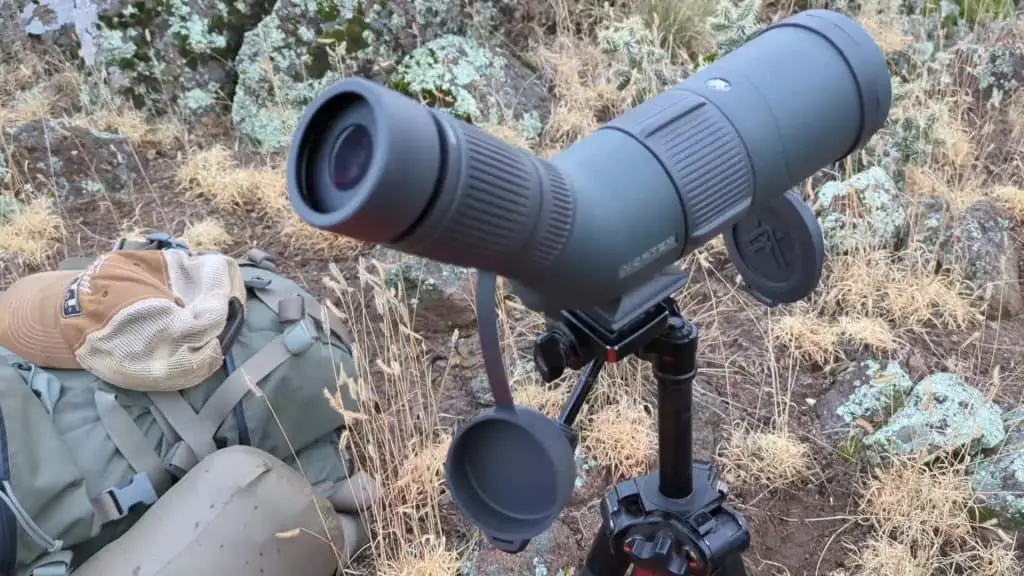
Mini Razor Specs
To start, let’s take a look at the specs for this model of the Razor.
It has a 56 mm objective lens with variable, 13-39 power zoom. This is comparable to mid-size spotting scopes that generally have a 65 mm objective and 20-45 (sometimes up to 60) power zoom.
It also is just under a foot (12 inches long), which makes it extremely packable.
The difference with the Mini Razor is that it weighs in at 28.6 oz (just under 2 lbs). Most other spotting scopes are going to be in the 4 lb range. That’s an immediate weight savings and improvement in packability.
The 13-39×56 version of the Razor is available with both a straight and angled eyepiece.
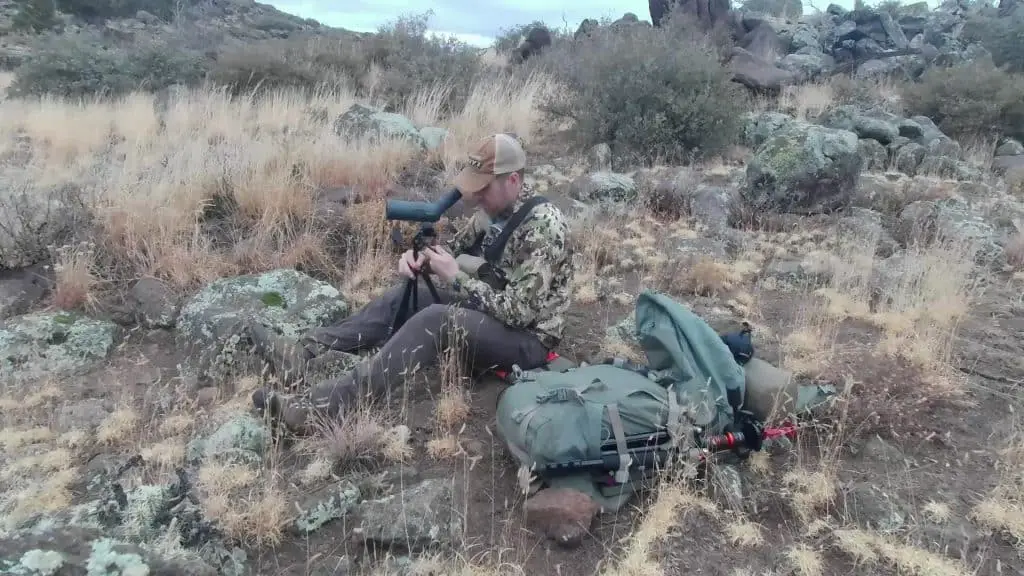
Testing situations
I tested the Mini Razor in a variety of conditions.
I was out at first light looking for deer at distances of 1-2 miles. At other times I was trying to identify ducks in the evening with the sun in my eyes. We even used the Mini Razor to do some spotting for long-distance (for me) shooting (out to 600 yards).
The testing put the spotting scope through a variety of conditions where you would want your spotter to have good performance. Here’s how it performed.
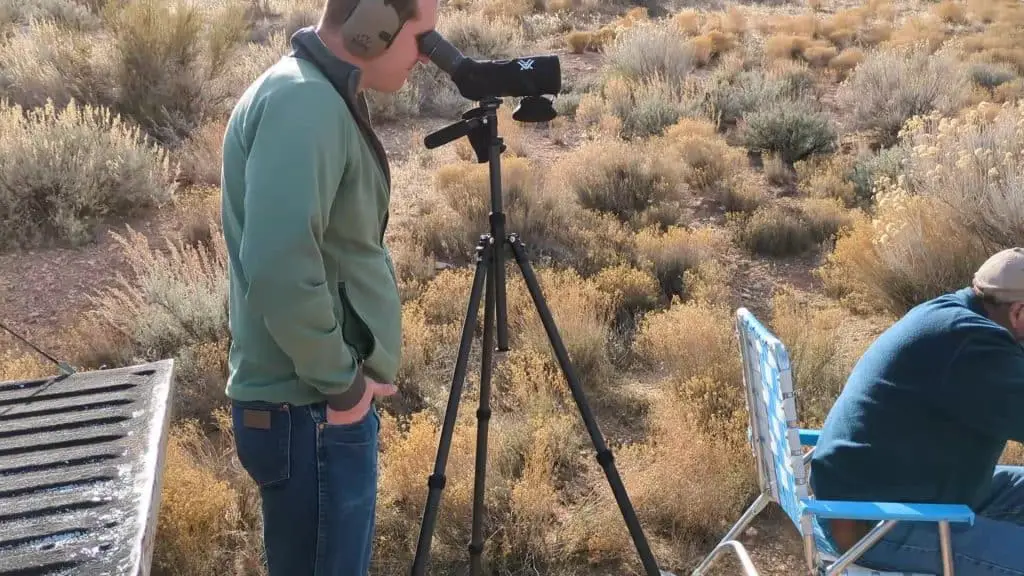
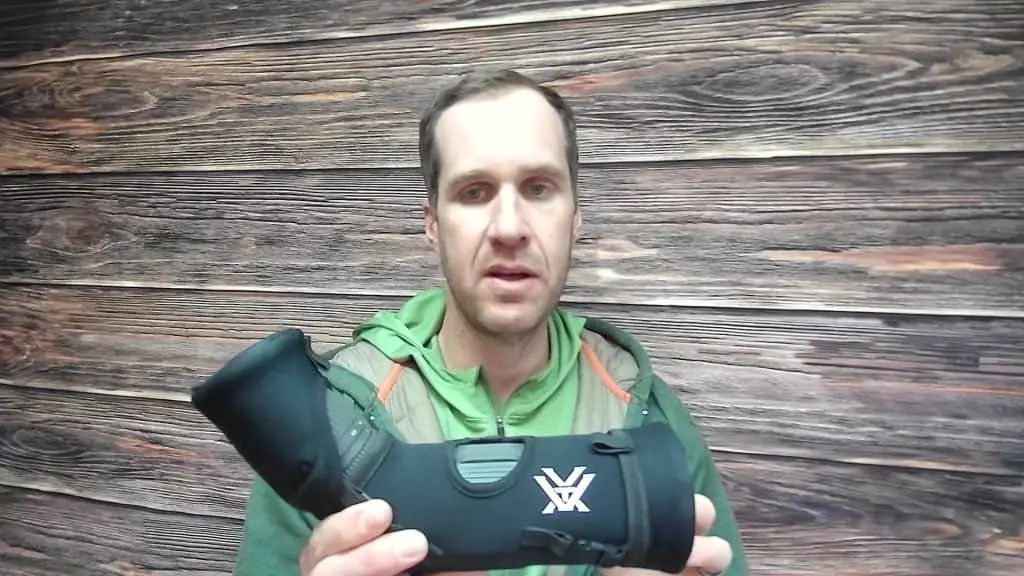
Where the Vortex Razor 13-39×56 performed well
The Mini Razor is very packable. It’s so lightweight that you hardly notice it in your pack. In fact, it weighs the same as some pairs of binoculars. But it gives you more magnification to check out those far-off areas. This is the ideal piece of glass for a backcountry hunt where you’re putting on some miles and want to cut as much weight as possible. With this scope, you can cut down two pounds off of other glassing setups. That’s pretty impressive.
I found the Mini Razor to perform as well, or better than the Leupold SX2 in all situations. In most situations, it was better. During the middle of the day when the light was good, it was on par with a full-sized spotting scope. In low-light situations, it outperformed the lower-end scope.
There were no clarity problems when looking for animals in shaded areas at reasonable distances (1-2 miles).
When shooting, it is easy to follow bullet traces and track impacts through the glass.
The eyepiece is set up well for digiscoping.
My biggest concern about this scope was that the smaller diameter objective lens would limit clarity in low-light situations or when using high magnification.
The Razor performed well throughout the magnification range, even in low-light conditions. With other scopes, I’ll often have to decrease the zoom as light decreases. However, with the Razor that was seldom necessary. I was impressed by the overall clarity.
The focus wheel was a little stiff at first but loosened up after a little use and became easy (but not too easy) to dial in the correct focus.
I chose the model with the angled eyepiece because I think it’s more versatile and easier to adjust when glassing carried terrain. You can also get the Razor with a straight eyepiece.
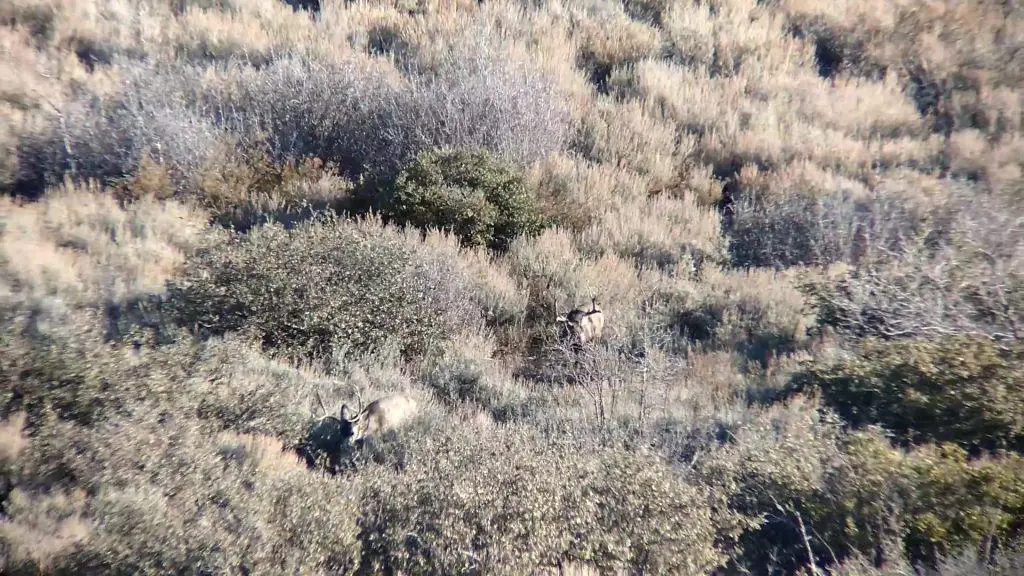
Where the Vortex Razor 13-39×56 performed poorly
At first, the focus wheel was somewhat difficult to twist. This was an annoyance, but it quickly loosened up to be much more usable.
Another annoyance is that the scope ships in two pieces. You have to insert the eyepiece into the main body of the scope. Apparently, this is somewhat normal for Vortex optics, but I’ve not experienced it with other spotting scopes. It’s a little tedious to do, but not too hard. More annoying than anything.
Because the zoom maxes out at 39x, this spotting scope is not going to be the ideal choice for glassing at distances over 2-3 miles. Though at that range and magnification, it can be difficult to glass with any spotter unless the conditions are perfect.
On cloudy days at first or last light, the smaller objective may have a difficult time capturing enough light to produce a clear picture. I was out a couple of mornings and evenings and was able to get a clear picture right at, or shortly after, legal shooting light began. However, if you’re looking for a spotter that will let you start glassing before legal light, this may not be the option for you.
Finally, if you’re glassing from a truck, or not hiking in very far, it may be worth it for you to just get full-size spotter. The appeal of the Mini Razor it’s weight (and small footprint). If you’re not worried about that, you’re probably better off putting $1000 toward a different product.
That brings me to one last thing. The price. $1000 seems a little steep for such a little spotting scope. But it does perform really well.
Another annoyance is that the angled eyepiece is fixed. It doesn’t rotate. This is somewhat minor, but one of the big advantages of the angled eyepiece is that you can relieve some eye (and body) fatigue by changing angles and positions. That’s not possible with this spotter, though I found overall the spotter is very comfortable to use, even though the eyepiece doesn’t rotate.
Should you buy the Mini Vortex Razor?
Hopefully, the analysis above has helped you understand if the spotting scope is a good choice for you. For me, it’s a great product. I often hike several miles a day while hunting and the weight savings and small footprint are very valuable in that situation.
I’m also not worried about accurately judging antler or animal size from a long distance. As long as I have a relative idea of how big an animal is (and if it’s male or female) that’s good enough for me. If you’re looking to get magnification and clarity for judging animals at long distances, you may want to look for something else.
Overall, this is a great product, but a niche product. For the right person, this is an absolutely amazing piece of gear. But in the wrong situation, you may wish you had your money back.

